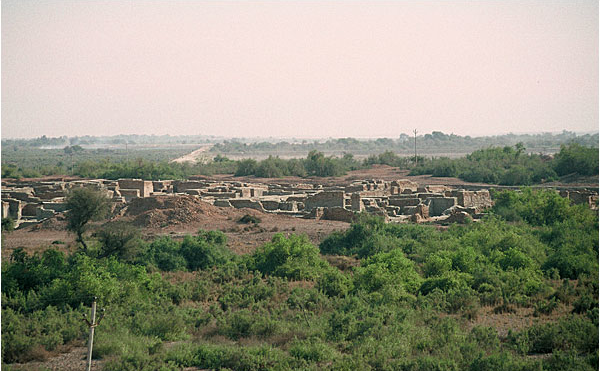The northeastern sector of Mohenjo-daro was excavated by K. N. Dikshit and designated DK-G area. Pathways allow visitors to visit the excavations, and an unexcavated portion of the site in the right foreground show what the site looked like prior to excavation. The large levee in the background protects the site from the encroaching floods of the Indus River.
The Indus Valley Civilization has been the focus of research for over 100 years, beginning with its discovery in 1873 at the site of Harappa (Cunningham 1875). Since that time strategies for recovering more information on this culture have progressed through several cycles of intensive excavation at both large and small sites, and and regional surveys have been carried out through much of the northwestern portion of the South Asian subcontinent. Excavations at the sites of Harappa and Mohenjo-daro in the 1920s and 1930s were followed by regional surveys that revealed the presence of numerous Indus related sites throughout what are now Pakistan and western India. Additional sites with links to the Indus region were discovered in Afghanistan as well as in Oman and even as far away as Mesopotamia.

